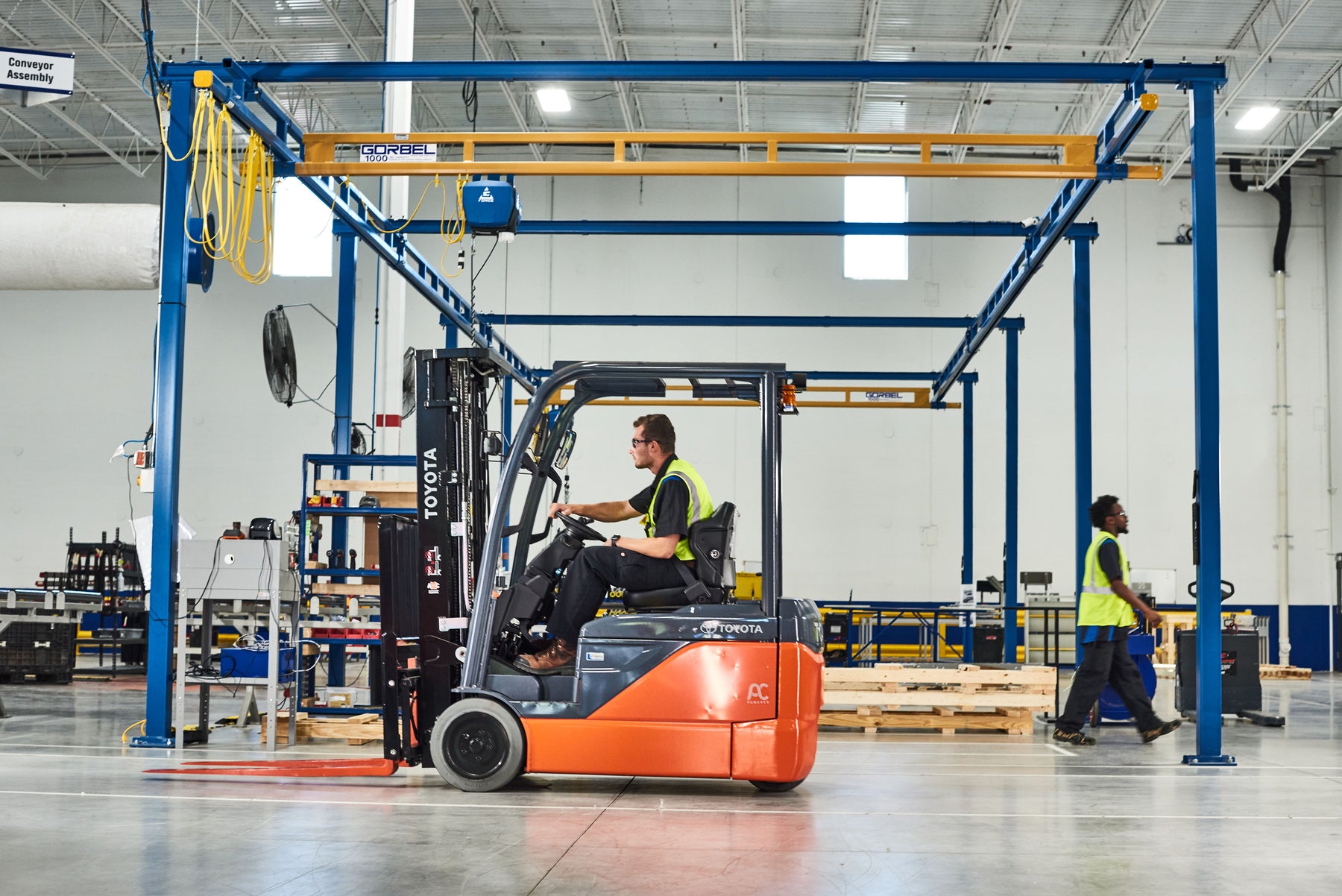
How Forklifts Work
The very first rudimentary forklifts began appearing in materials handling workplaces about 100 years ago. Since that time, a steady series of evolutionary changes and improvements have been built into those early designs, resulting in the technologically advanced lift trucks that appear in warehouses and distribution centers today. In fact, one of the earliest lift truck manufactures—Yale—is still in operation. Yale is credited with developing the first lifting system that could move a heavy load far above the height of the truck without tipping the truck over.
So how does this work? How do modern lift trucks accomplish feats that seem to challenge the laws of physics, pushing the limits of mast height and load stability? To understand the basics of forklift technology, start by considering each standard lift truck’s components; the frame, mast, counterweight, forks and backrest. All these moving parts are driven by a power source, typically a gas-powered combustion engine or a rechargeable electric battery.
As the forks (or removable attachment) support the load from below, a system of chains in the mast begin to raise the load while the counterweight moves backwards to hold the truck in place. Modern Toyota lift trucks rely on an SAS, or system of active stability, in which a series of sensors in the mast gather data regarding the height and weight of the load. This data then controls a complex counterweight system beneath the frame that shifts the truck’s center of gravity in any number of directions to compensate for the weight of the load in real time.
When every component works together in harmony, even the heaviest loads can reach astonishing heights. But the lift truck operator is by no means an insignificant part of the equation; in fact, savvy, attentive and well-trained operators stand between a smoothly executed lift and any number of missteps that can lead to tip-overs, dropped loads, collisions, product damage and worse. When lift truck drivers understand the nature of the equipment and perform detailed pref-light checks at the beginning of each shift, they can prevent these problems and bring high returns to the company’s bottom line. The value lift trucks bring to the materials handling workplace—even simple hand trucks with no power source at all—can be very high, and in some busy warehouses, hardworking lift trucks pay for themselves many times over within a single year on the job.


